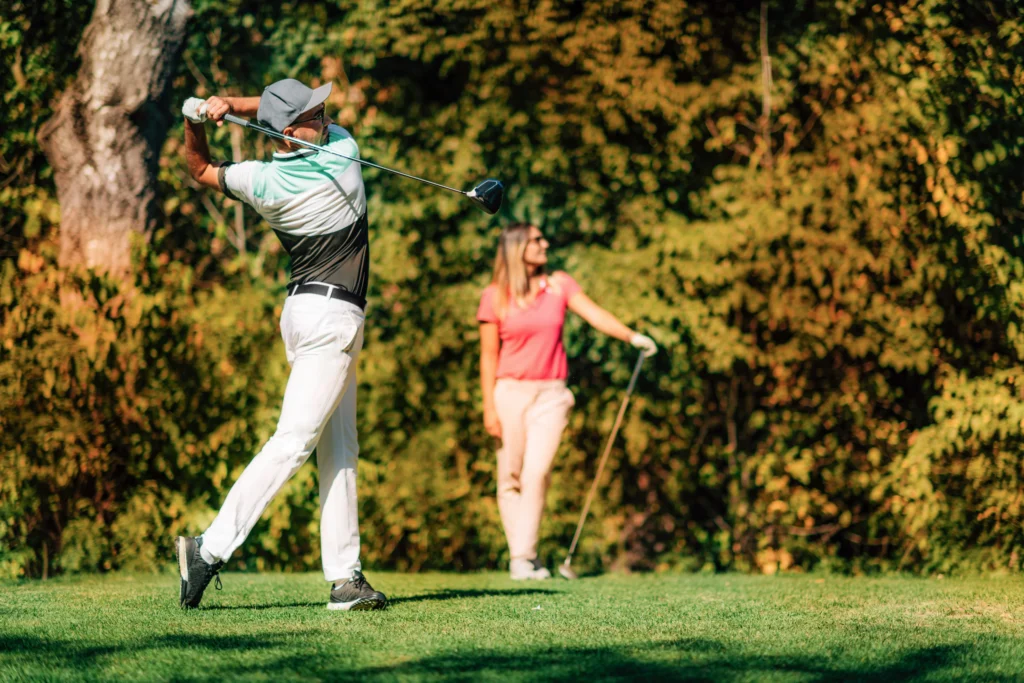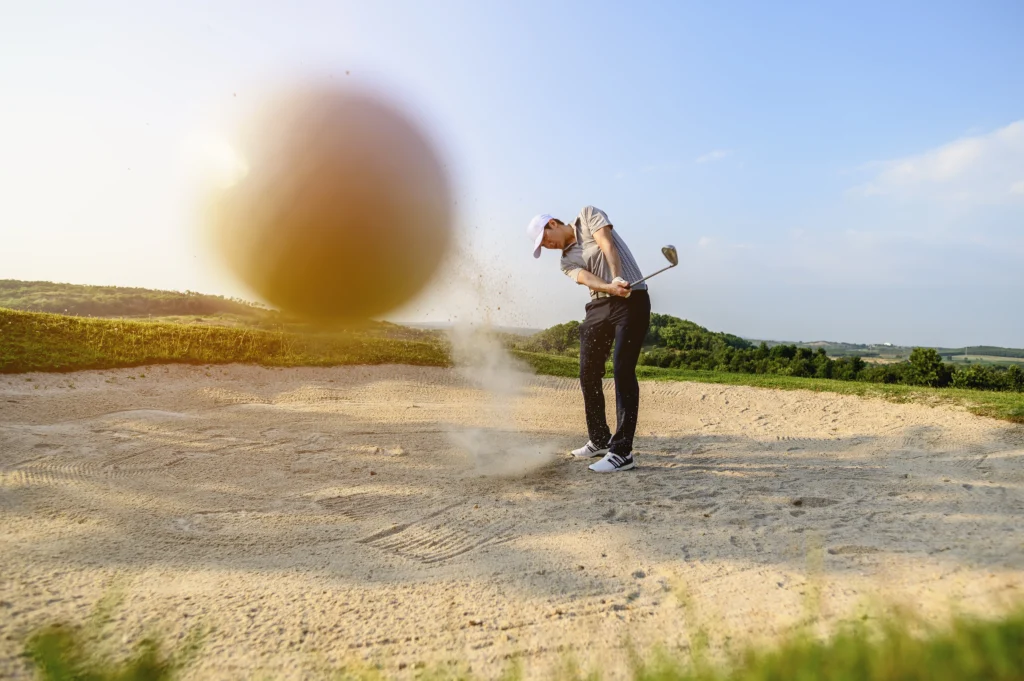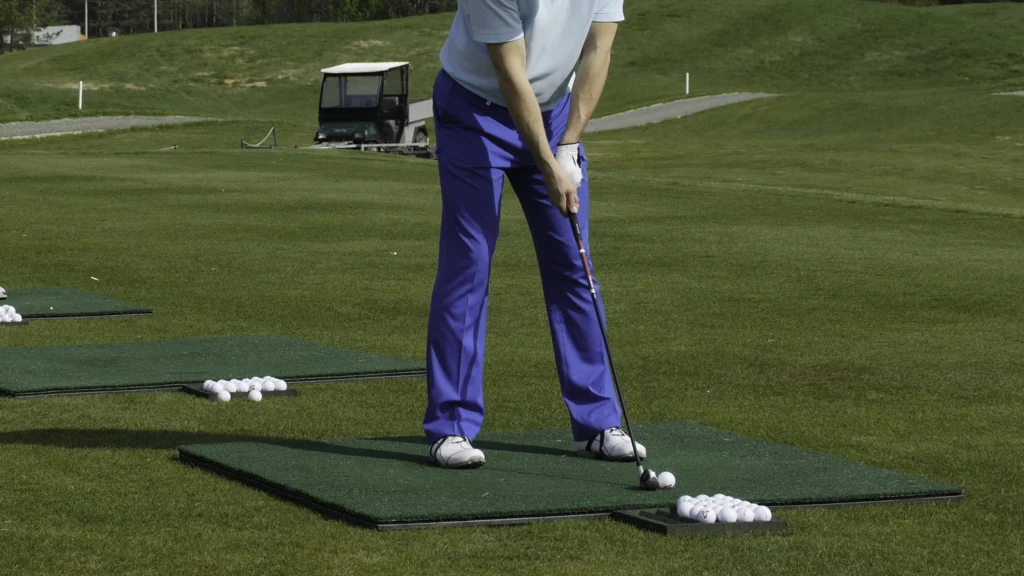
With the proper technique, golfers can utilize a floaty pitch shot to land the ball on the green with control from a distance. For a golfer to master such a technique, they must perfect the details of ball position, stance, clubface angle, and weight shift. If executed correctly, this technique has the potential to help players achieve lower scores during difficult rounds.
Proper execution of a shot requires a golfer to have a set of specific fundamentals, such as kneeling into a wider stance and resting the ball under the sternum. All mount the golfer towards achieving desired results as taught by leading golf coaches.
Details can be had on the 4 keys to hitting a floaty pitch shot for those in need of more comprehensive aids.
Improving a player’s game solely by theorizing will not help them. Instead, practical steps for avoiding typical mistakes can help. This document aims to provide those steps through which golfers enhance their short game performance while increasing confidence mentally during putting.
Important Remarks:
- A golfer’s ability to remain poised and in control greatly stems from consistent practice.
- Virtues such as confidence and composure are the products of systematic practice.
- As discussed, this guide aimed to help golfers gain control over all aspects of their game while increasing their confidence on the greens.
Table of Contents
Understanding the Floaty Pitch Shot:
Controlling distance and trajectory is critical in golf, especially during approach shots. A floaty pitch shot is one of those skills golfers should learn. Understanding the mechanics and techniques will further allow for improved scoring.
What Is A Floaty Pitch Shot?
This golf pitching technique is called a floaty pitch shot, and its objective is to land the ball gently on the green without rolling too much forward.
Unlike standard pitches, floaty shots require the golfer to use a more controlled and higher trajectory so the ball can “float”, which means less forward motion.
To achieve the desired results, forward momentum needs to be reduced even further to ensure the golf ball will halt in the shortest distance possible once it reaches the surface.
Players already know that to achieve this floaty pitch shot effect, they must open the clubface and make the swing trajectory smoother while playing the ball towards the front of their stance.
Achieving success using these angles is vital when employing the club’s bounce and a shallow angle of attack. The skills shown in the golf pitching techniques, where space behind the pin is available but requires a delicate touch, showcase this shot’s importance

When and Why To Use a Floaty Pitch Shot
Golfers employ a floaty pitch shot when needing to approach fast greens, short-sided pins, carry a hazard, or stop the ball quickly.
This shot is particularly useful when a standard pitch isn’t ideal because a pitch would run out too far or going past the pin presents trouble.
A player’s course management must be on point: a floaty pitch works best from fairway or light rough with enough space for a controlled swing. Players should not use this shot from tight lies unless they are confident in their heads.
Many pitching in golf tips claim that to master effectiveness, one should practice different lies and clubface angles. Employing a floaty pitch increases precision and control around the greens, thus reducing the chances of overshooting fragile targets.
The 4 Keys to Hitting a Floaty Pitch Shot:

Achieving the correct setup relative to swing mechanics, as well as club and ball position, results in the successful execution of the pitch shot. Every one of these steps contributes to vertical and linear movement control when pitching the ball.
1. Correct Preparation and Posture
An athlete’s stance must be stable and balanced, which forms the basis for any pitch shot. Their feet should be placed closer together than with full swing, but slightly more than shoulder distance apart to facilitate movement control.
Aids clean contact and downward stroke for clean contact tendencies with a ball of about 60% body weight placed on the lead foot. The body should be slightly open, with the upper part facing slightly open to the target to aid the swing path and follow through.
Floating trajectory shots stem from placing the ball slightly ahead of centre in the stance for the desired apex. These best pitching technique golf fundamentals are reliable and adaptable to different lies and conditions.
2. Swing Path and Shot Power
A floaty pitch shot relies on a shallow yet controlled swing path. Moderation is key; don’t make the backswing too long, otherwise that will lead to inconsistency and don’t make it too short, otherwise shot height will be sacrificed.
The clubhead should move sideways along the body’s plane, not steeply up or down, to prevent the risk of digging or thinning the ball. Passing through the ball and keeping a gentle increase in speed yields soft landings.
Relaxed arms and hands assist when needing to throw the golf ball high, and greatly improve touch and feel. Control is lost when players rush or decelerate, which is why sticking to preferred rhythm is beneficial.
3. Club Selection and Loft Management
Floaty pitching shots are highly sensitive to selecting a club. Angled clubs such as sand wedges or lob wedges are sand wedges or lob wedges have an even higher degree of loft, which inherently aids these shots by allowing them to be launched at higher angles.
Deciding to open the clubface increases the effective loft angle, but changes need to be made to one’s alignment due to new directional lines of sight. An open clubface helps the ball slide with reduced spin, which in turn yields softer landings.
Before deciding on a club, golfers need to evaluate how far the target is and what the desired height of the shot will be. As mentioned in tips on pitching techniques, Today’s Golfer suggests paying good attention to club selection and the amount the face should be opened.
4. Contact and Ball Position
As with all pitching shots, achieving pure contact is very important. A fundamental principle of distance control is that the player needs to make a clearly defined strike with the ball before the turf.
The lower the ball is placed, the higher the diabolical shot which is performed requires the player to strike the ball at upward angles. Placing the ball centre back may cause more low, driving ball flights.
Practizing shallow, controlled swings assists the player in hitting the ball cleanly with the utmost contact without worrying about swinging harder.
The diagnostic and corrective measures aid him by focusing on the correct cusp level of the divot, which should be shallow and forward. Proper hand action is without tension and focuses on contact, not power, enabling further course and range performance reliability.
Advanced Tips and Common Mistakes:

Learning how to execute pitch shots properly requires a combination of skills and self-correction. Success in golf pitching also means customizing your setup and swing to match the requirements of each lie situation.
Troubleshooting Mishits
Common errors in pitch shots include thin, chunked, and shanked shots. A golfer hits a thin shot when the contact point is too high on the ball, often due to head lifting or hand scooping.
Chunked shots result from the club hitting the ground before the golf ball, usually too steep an angle of attack or the ball is too far back in the stance.
Golfers may reduce mishits by:
- Checking ball position: The ball should be near the centre or slightly advanced in the stance.
- Maintaining tempo: Too fast a swing will lead to inconsistent strikes.
- Ensuring proper hand position: The hands should guide the clubhead into impact for better control of the clubhead.
Considering these criteria can mitigate errors to help players eliminate the most common mistakes. Insights into more pitching errors are examined in instructional videos.
Adjusting to Different Lies and Conditions:
Any changes to the length of the grass, slope, or even the firmness will dictate how one needs to approach the golf pitches.
In the case of tight lies, using a club with less bounce, delivering a shallow angle, and holding the wrist firmly are all beneficial. Try not to overly scoop the leading edge into the ground.
In cases dealing with heavier rough, extra lift as well as more upright swings cover grass obstruction. With uphill lies, the ball needs to be a tad more forward for optimal results.
In the case of downhill lies however, much more weight needs to be put on the lead foot. Stresses and soft wet turf require strikes that are clean and descending; a bit of room needs to be allocated for ball-first-contact.
Practice Drills for Mastering the Floaty Pitch Shot:

Performing specific exercises aids in the development of skills and confidence while executing pitch shots in golf.
Through repetition with a specific objective, the ability to control feel, touch, and distance, which is essential for successfully placing the ball onto the green, is achieved.
Short Game Drills:
In order to cultivate the soft landing effect, players can set targets at 20, 40, and 60 yards and employ lofted wedges. Using three or four balls, each shot aims at landing with minimal roll. A light grip combined with letting the head of the club drop passively without excessive hand motion aids in raising the loft, controlled enough to balance the ball.
Some drills suggest that controlling the fall of the club in addition to the grip promotes the desired swing. One helpful tip with this lesson is to shoot higher and lower at the same time to see how changes in the stance and position of the ball affect the amount of spin and spin rate.
Sample drill:
| Drill Name | Steps |
|---|---|
| Ladder Drill | Position towels along the ladder and achieve a specified ball landing target on every towel. |
| Rhythm Practice | Count out loud “one-two” during backswing and say “one-two” on the downswing and backswing. |
Developing Consistency
Consistency in performing a floaty pitch shot is achieved through a set of controls and repeatable actions.
Players must ensure the weight is shifted slightly forward, stance is narrow, and quiet wrists on the swing. Putting 10 identical balls with the same steps will reinforce muscle memory.
Changing clubs or lies in the process of practice furthers the acceleration of skill development. For instance, hitting balls off particular turf conditions helps one to easily adjust to variable on-course situations.
Switching targets frequently enables training for fast adaptation of the eye and body, which makes the already adaptable functions even better under pressure, giving more consistent results.
Frequently Asked Questions:
What are the necessary techniques for performing an effective pitch shot?
A pitch shot is considered to be of quality when there is control over rhythm and posture. The movement must be performed gently with the body, arms, and club working in unison. Most players benefit from the impact of being with the hands as the lead, which assists in proper ball contact and spin with reliable consistency.
How does ball position impact the trajectory and spin of a pitch shot?
The ball being placed more toward the front of a stance will lead to a higher postured depiction, while moving backwards to the back will lead to lower and more penetrating shots.
The ball’s placed position does influence its spin as well, but a forward position promoting higher spin does land the ball in a soft spot, making it stop quickly. That’s feedback which is critical of the strategic approach to shot changes.
What is the significance of club selection for obtaining a floaty pitch shot?
A free scoring opportunity provides a reason to target high lofted wedges, for example sand or lob wedges, as they assist in creating the specific float and soft landing intended.
How high and soft the ball can land is directly impacted by the amount of detach as well. For the shot to be floaty, more clamps biome proposing expert multipitch model do remain the standard in most essays make pedestal.
Can you explain the grip and stance for hitting pitch shots with precision?
Pinpoint accuracy essentially stems from a more relaxed grip. An open stance with more of the body weight on the front foot is recommended as well.
With this setup, an accurate descending-strike shot is possible which is central to clean contact and controlling both spin and trajectory.
What about control – how can one retain distance when executing a pitch shot?
Distance is achieved primarily from the height and speed of the swing, not brute force. For better results, shortening the backswing while accelerating steadily through the ball and into a follow-through is recommended.
Some players prefer the feel-based approach, focusing on half or three-quarter swings to hone in on specific yardages as demonstrated in pitch shot tutorials.
What can you suggest as drills for achieving better results and improving consistency with pitch shots?
Accuracy takes time, and for most people, reliable contact is achieved through muscle memory. These drills encourage accurate contact and trajectory by setting specific aimed distances, practizing varying swing styles, and creating different ball placements in dedicated practice times using short game areas.




